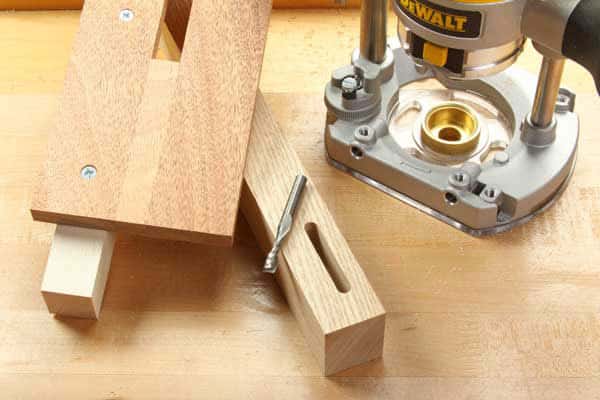How to Plunge Cut With a Hand Wood Router
A plunge cut is a type of cut that goes into the surface of a material from above. Plunge-cutting with a router should only be done with a specific plunge router and a plunge-cutting router bit – a router bit that has a bottom cut facility, which means their cutting edges extend across the bottom of the bit. Other routers are fixed-base routers and will not be suitable for making plunge cuts.
Make sure you have the right type of router bit
Ensure the bit you choose is designed to plunge-cut, or, the tip will spin against the surface of the material and will probably burn it. Plunge-cutting router bits might be labeled as bits with a bottom-cut function, but if you’re unsure always check the specifications of individual bits before you use them. Using the wrong equipment can damage your machinery and your workpiece.
Set the height of your router bit
If you want to plunge-cut down to a specific depth, you should set the depth on your router before working. How you do this depends on the brand of router you choose, but most use a form of a depth stop (usually a rod and column) that can be adjusted to the height you require. The depth stop limits how far into the material the bit can be lowered. The Trend branded routers have a 3 turret depth stop that allows you to pre-set 3 separate heights for plunge cutting that can easily be changed as you work.
Step 1
Turn on the router and lower the bit down onto the workpiece.
Step 2
Once the bit has cut through the surface, you can move the router to create your chosen cut.
Make deeper cuts progressively!
Plunging deeper than several millimeters with a single cut should not be done. Instead, you should make a series of shallow cuts that get progressively deeper. This means that less strain is put on the cutting edges of your router bit, and on the router’s motor itself.
Take regular breaks
Every so often you should bring the router bit back up out of the material and turn the router off so the motor and router bit can cool down, and you can clear any debris from the cut. You should also clear any waste material from the cut to prevent it from becoming clogged. Make sure you use an appropriate dust extractor when using the routers.
Source by Lori Jones




